The billionaire Bill Gates once said, “to win big, you sometimes have to take big risks.”
Borussia Mönchengladbach can be condemned for taking the relatively safe option last summer when Marco Rose moved to Borussia Dortmund to become the next permanent manager at the Signal Iduna Park.
Mönchengladbach appointed the former Eintracht Frankfurt coach Adi Hütter as Rose’s replacement. Hütter had done a very solid job with the Eagles and was now preparing to take on the Foals.
However, Hütter’s reign was a disaster, and the Austrian was dismissed at the end of the 2021/22 campaign, having won just 14 of his 37 games in charge. Instead of playing safe once more when appointing the next man to sit on the throne at Borussia-Park, the Mönchengladbach hierarchy took an eyebrow-raising risk.
Daniel Farke, formerly of Norwich City, was the chosen one. Having led the Canaries to consecutive Championship title victories, Farke has so much to prove in top-flight football. In 49 Premier League matches, the German-led Norwich to six wins.
Farke has experience in Deutschland, from his tenure at Borussia Dortmund II in the lower divisions. However, Mönchengladbach are taking a massive leap of faith by handing the 45-year-old his first Bundesliga job.
This article will be a tactical analysis of Daniel Farke, looking at the tactics that observers and fans alike can expect from Mönchengladbach during his reign based on his time at Carrow Road.
Preferred formation
When it’s all smooth sailing for Farke, the abeyant manager sticks with his preferred 4-2-3-1 formation. The conventional structure is Farke’s little symmetrical baby, providing balance in offence as well as defence.
In the former SV Lippstadt manager’s final full season in charge of Norwich City, which was in the side’s 2020/21 promotion campaign, his use of the 4-2-3-1 was constant and overwhelming.
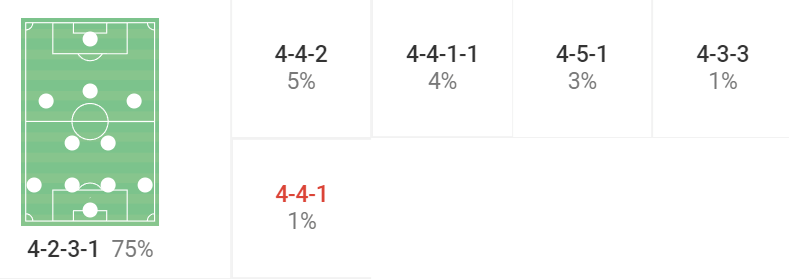
There were times when a shape change was necessary for the Canaries, but given that Norwich were undoubtedly the strongest team in terms of quality in England’s second division, Farke was able to keep the formation he so loved.
In the 2018/19 Championship season, Norwich deployed the 4-2-3-1 in 80 percent of their matches. Again, the Canaries were the best side in the league and so opponents would bend for them, it wouldn’t be the other way around.
However, upon promotion for the 2019/20 campaign, the 4-2-3-1’s usage dropped to 67 percent.
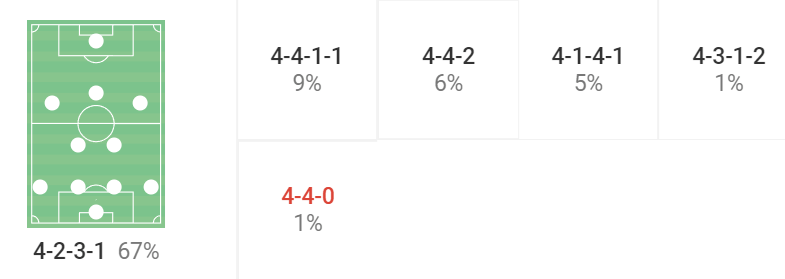
Farke was forced to look for alternatives as Norwich now had to bend or be broken by the league’s giants like Manchester City, Manchester United and Liverpool.
The second time around, when Norwich came back up to the Premier League this past season, Farke’s 4-2-3-1 was being ripped to shreds and so the German turned to his dark side, setting the relegation-fodder up in a 5-3-2 several times before eventually losing his job to Dean Smith.
Regardless, while Farke’s newfound tactical flexibility was rather forced upon him, the manager is taking over a side that are extremely adaptable structurally. Borussia Mönchengladbach’s inconsistency led to a constant chopping and changing formality from Hütter.
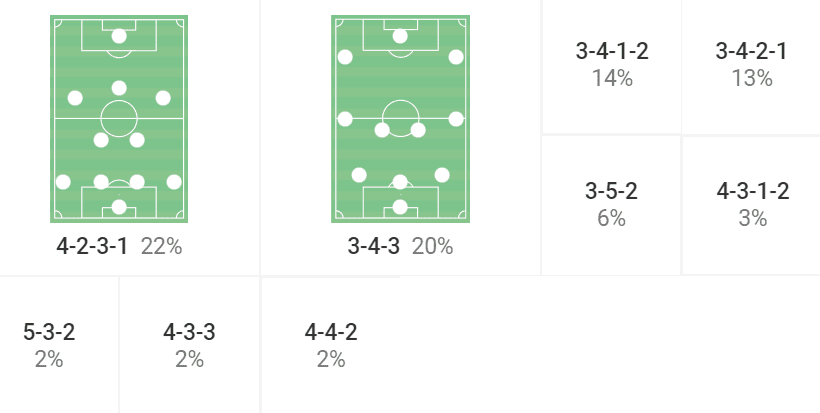
The image above has highlighted all of the formations that Mönchengladbach used in all competitions throughout the 2021/22 campaign. While the 4-2-3-1 was their main go-to, Hütter’s men were no stranger to a back three/five.
This gives Farke a lot to think about and can definitely be seen as a positive by the new coach because of his players’ ability to execute a game plan in any formation.
Nevertheless, given Farke’s tactical history with Norwich, Mönchengladbach will likely be using the 4-2-3-1 in the 2022/23 season.
Monchengladbach struggles in possession
Interestingly, both times Norwich reached the promised land of top-flight football, before collapsing back down with a whimper, the Norfolk-based club were well-drilled in possession and looked to play beautiful possession-oriented football, irrespective of their differences in quality.
The Canaries always looked to build out from the goalkeeper and play their way through the thirds of the pitch using quick passing on the floor. Norwich had plenty of width, depth and central occupation between the opponent’s lines.
Here is an analysis of Farke’s conventional build-up structure during his prolonged stint with Norwich.
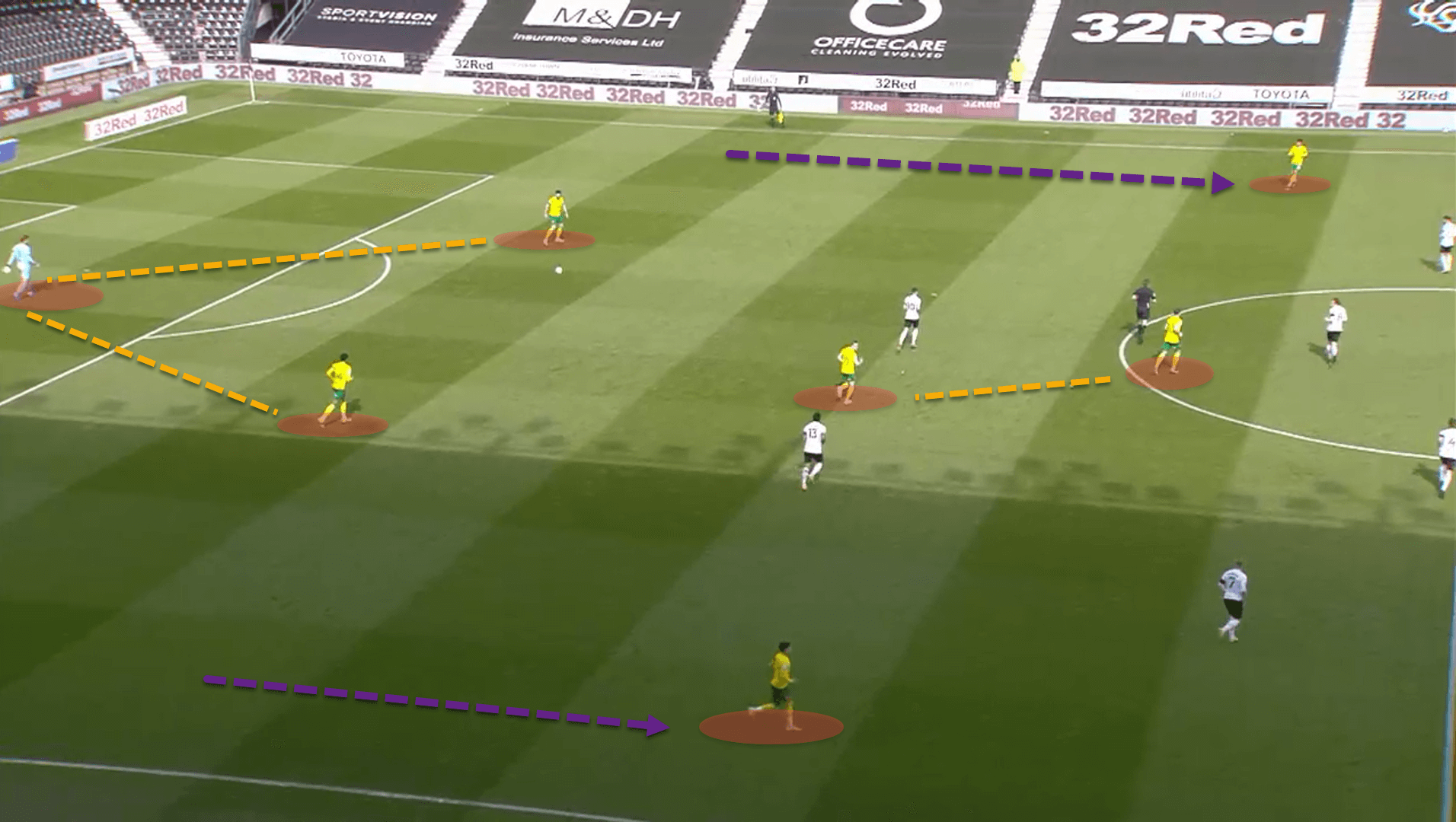
Playing out from the back will not be a new phenomenon to Mönchengladbach. In the 2021/22 campaign, the side had the fourth-highest number of ‘build-up attacks’ in the Bundesliga with 73 according to Opta, behind RB Leipzig, Borussia Dortmund and, of course, Bayern Munich.
Further up the pitch, Farke was keen for his side to create excellent crossing opportunities, particularly with the fullbacks.
There are two ways of doing this. Firstly, certain teams form wide overloads and look to break the opposition down with combination and superior quality on the flanks.
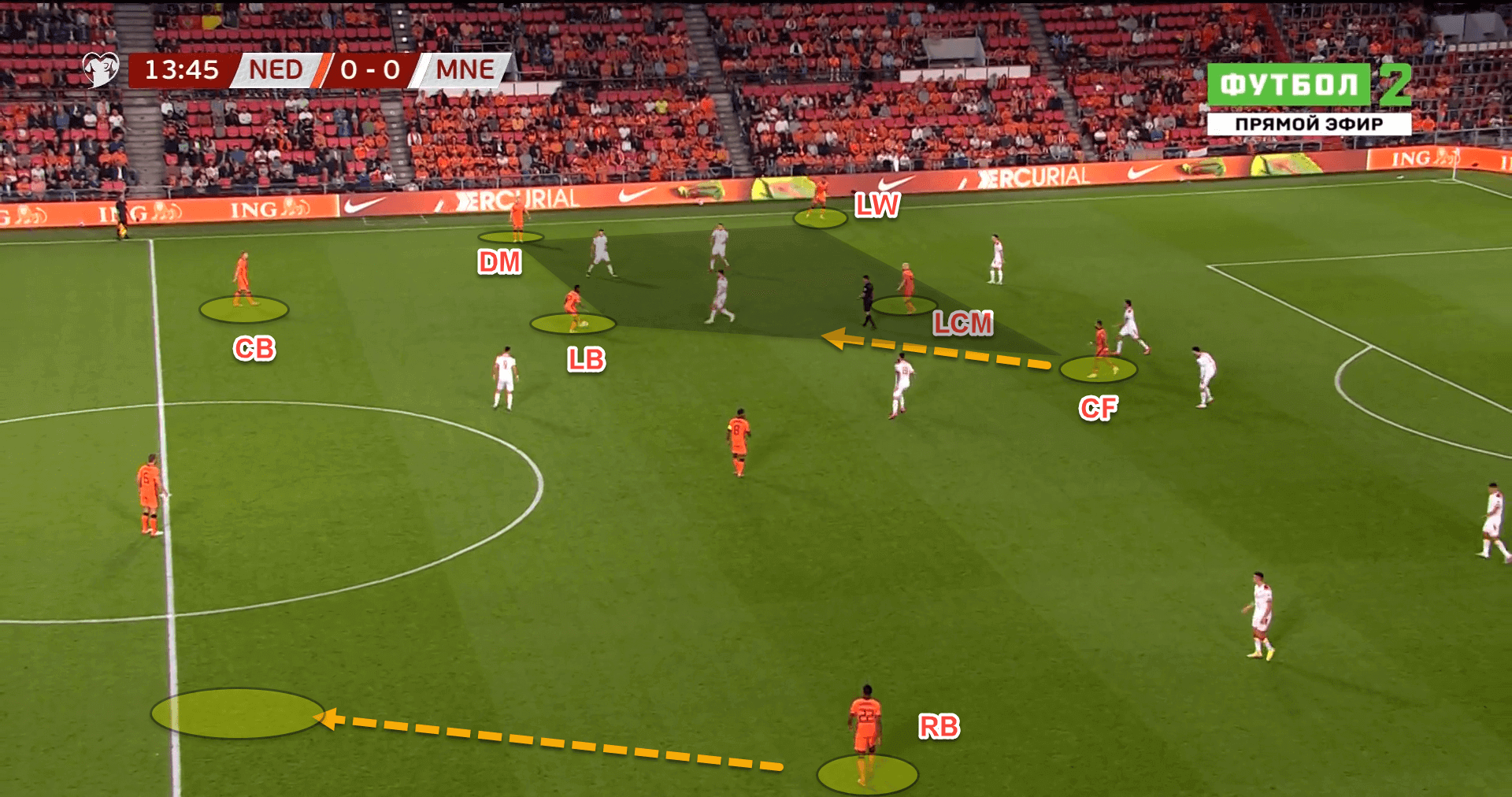
Farke prefers for his team to create central overloads instead, with the end goal being to free up the fullbacks in the wide areas.
The 4-2-3-1 expertly facilitates this as the wingers can tuck inside into the halfspaces and roam between the lines alongside the centre-forward, number ‘10’ and perhaps even one of the double-pivot if they positioned themselves higher. Nevertheless, this isn’t mutually exclusive to the 4-2-3-1.
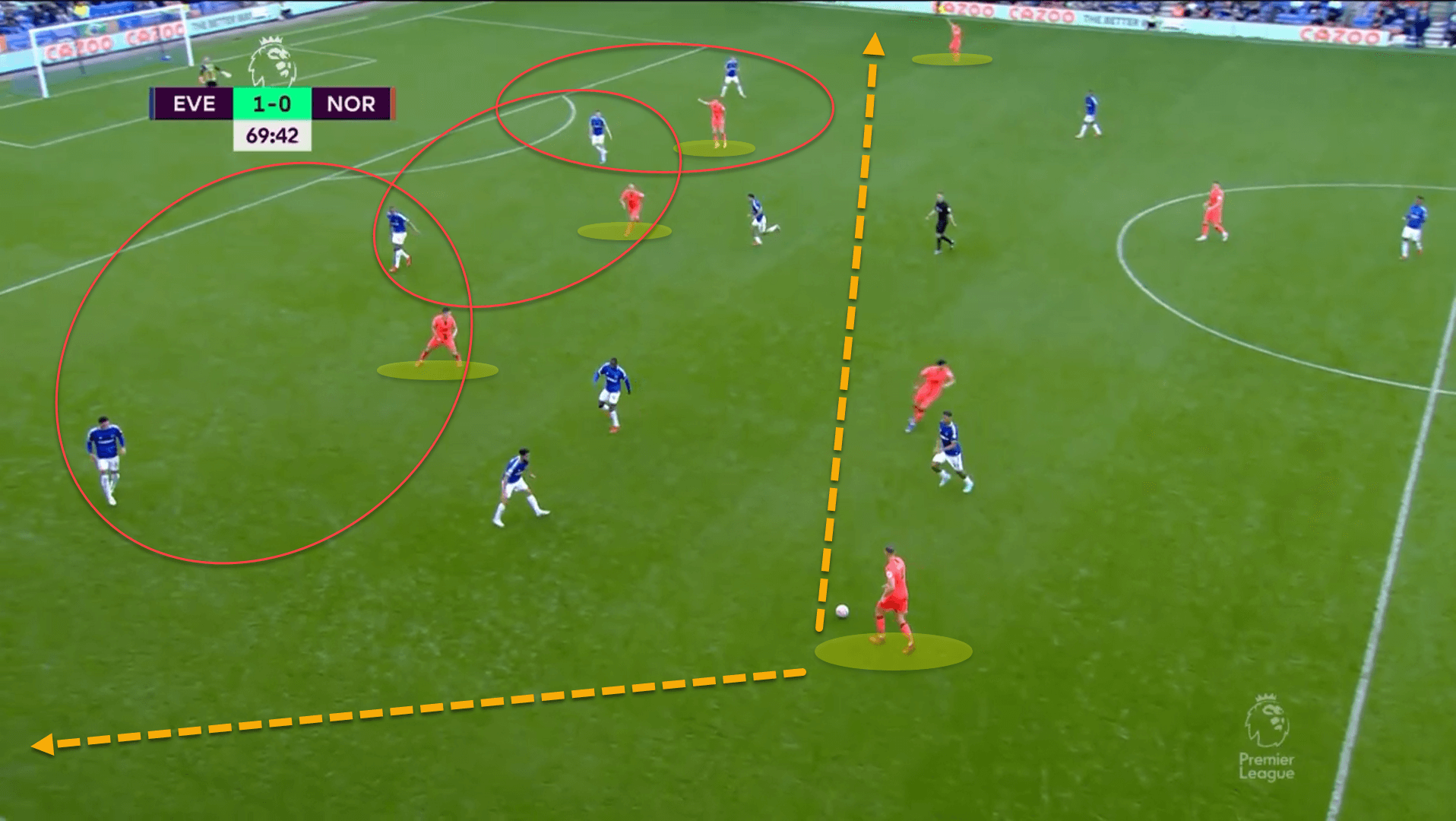
Look here for instance. Norwich’s front three in their 3-4-2-1 structure have occupied all four players in Everton’s backline, pinning them and leaving space for the highly-positioned wingbacks to receive the ball unscathed.
Despite their woes, in Norwich’s full season in the Premier League under Farke, the side averaged 49.4 percent ball possession on average per game which was the ninth-highest.
Last season, in the Championship, Norwich boasted the largest share of possession on average with 60.8 percent. Blackburn Rovers were in second place with 57.4 percent, so Norwich were having significantly more possession than any other side in the league.
Borussia Mönchengladbach can expect to be a possession-oriented side now that Farke is in charge. One could argue that the Bundesliga club already were. In 2021/22, Mönchengladbach held the seventh-highest possession share in the league with 52.9 percent. However, the Foals were not very effective during their settled positional attacks.
Similarly to Norwich, Mönchengladbach would overload the central areas of the pitch as the side entered into the final third.
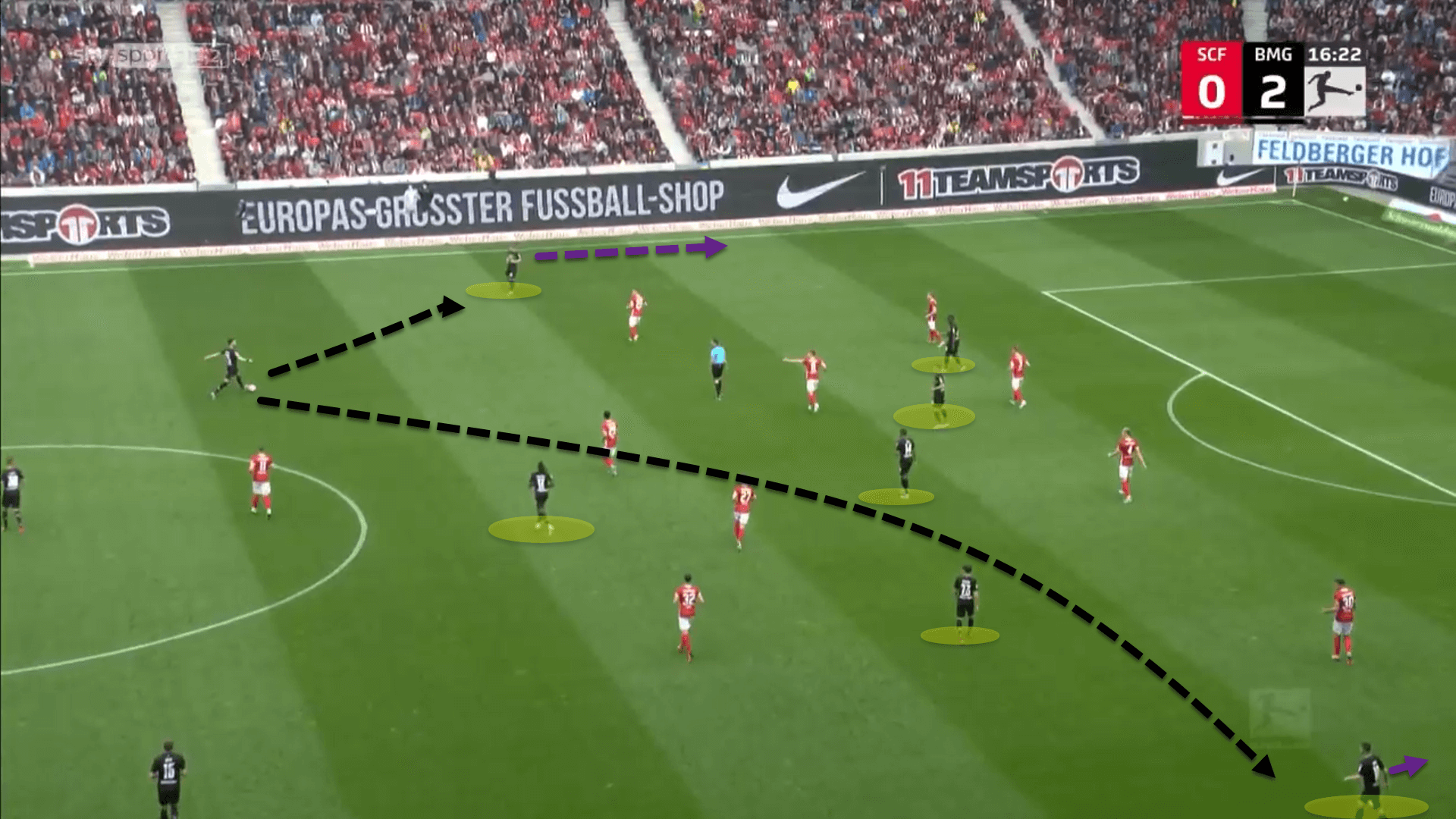
This image shows a near-identical situation to the one prior involving Norwich and Everton. This time though, through their 3-5-2 shape, Mönchengladbach have positioned four players between the lines, occupying Freiburg’s midfield and backline.
This has left the wingbacks free to receive the ball in advanced positions. From there, Mönchengladbach looked to create crossing opportunities from the flanks, using centre-forwards such as Marcus Thuram, Breel Embolo and Alassane Pléa as targets in the box.
Nevertheless, Mönchengladbach averaged merely 9.14 crosses per 90. The unfortunate part about that figure is Hutter’s side had a crossing accuracy of 38.2 percent last season, one of the best in the Bundesliga. But the team were also averaging merely 44.53 passes to the final third per 90, the fifth-lowest in the league.
In Farke’s last full season in charge at Carrow Road, the Canaries averaged 52 balls to the final third per 90 as well as 10 deep completions per 90 and so it’s likely that Mönchengladbach will be a bit more efficient in the final third from the wide areas under their new boss next season.
Farke’s fractious pressing
In a season of disappointment and tactical turmoil, one of Mönchengladbach’s greatest strategic strengths was their ability to hit teams on the break with blistering speed and boisterous power.
Mönchengladbach would press teams high, trying to turn over possession as high up the pitch as possible before transitioning towards goal.
The team’s Passes allowed Per Defensive Action (PPDA) over the course of the campaign was 10.47, one of the lowest in the league. With PPDA, the lower the number, the more a team presses as the opposition are allowed to have less of the ball.
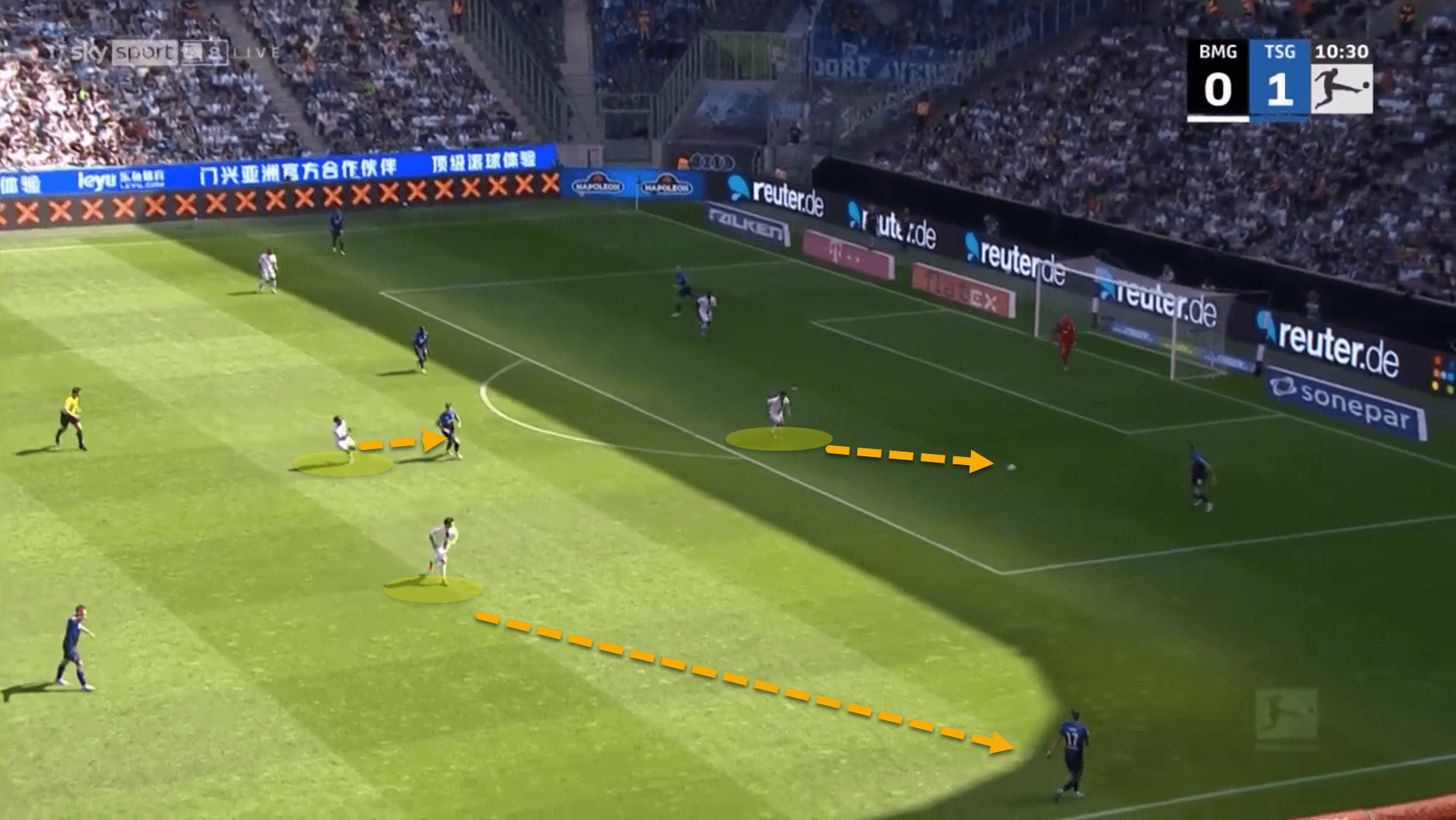
When the side pressed high as their opponent was attempting to build out from the back, the objective for Mönchengladbach was to force the attacking side to play out to the wide areas, generally to their fullback/wingback.
As can be seen from the previous image, the strikers would cut off one side of the pitch by angling their pressure, and the midfielders would also mark the opponent’s deepest options. If executed correctly, the ball player could only pass out to the fullback which was a pressing trigger for Mönchengladbach to aggressively close down and try to regain possession.
Norwich employed a similar strategy under Farke, but in the Premier League, it was a disaster.
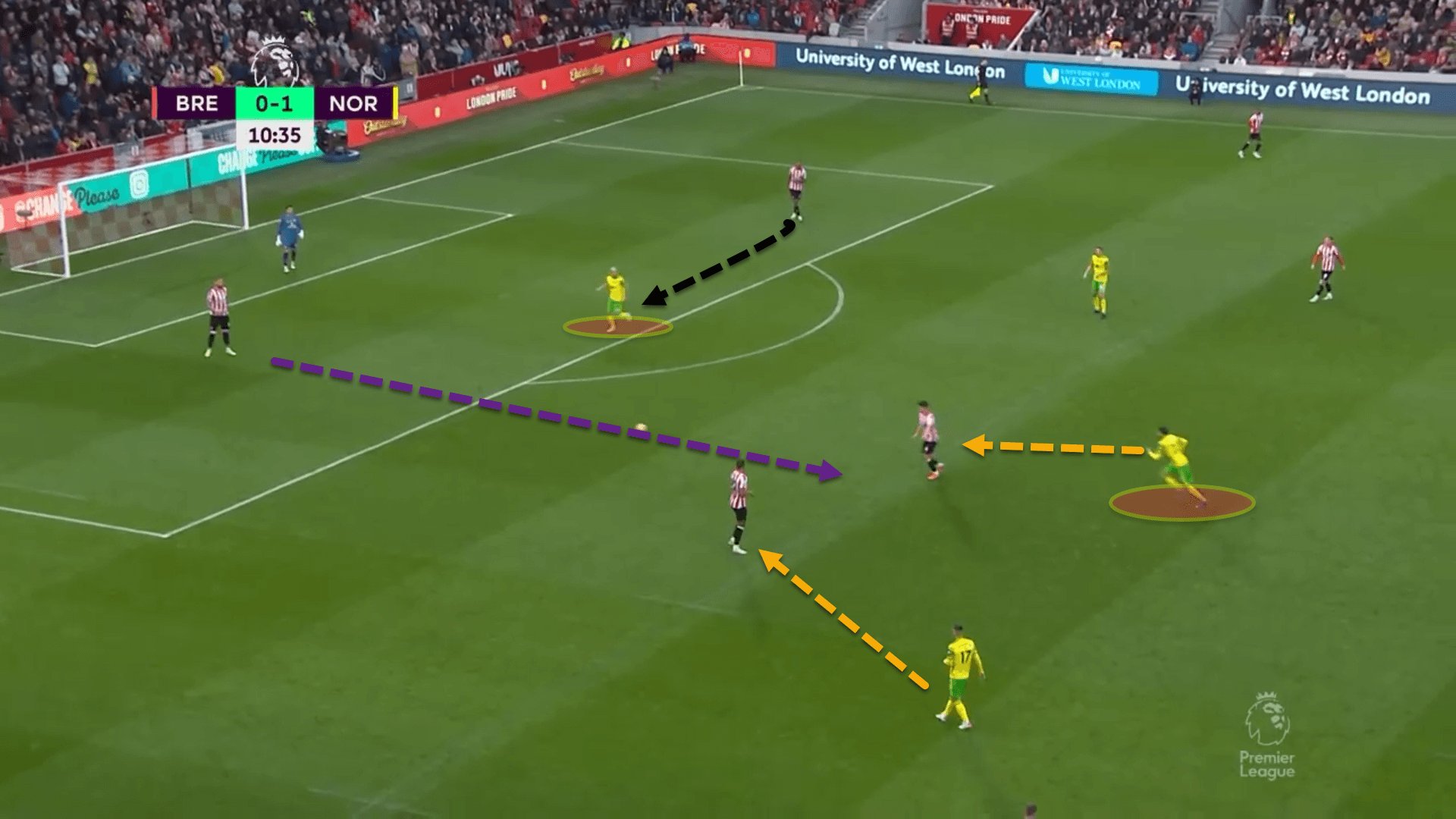
Here, we can see that the Canaries’ centre-forward Teemu Pukki has cut off one side of the pitch with his pressure. This is meant to be a trigger for Norwich’s players to step forward and quickly man-mark passing options in the midfield to prevent ball progression through the middle.
However, Norwich’s midfield is far too late to react. The trap fails and Brentford can easily play out from the danger. Again, here, in the same match, Norwich tried to trap the Bees in their hive out wide, but the press was half-hearted, and players did not fulfil their jobs correctly of blocking off passing lanes.
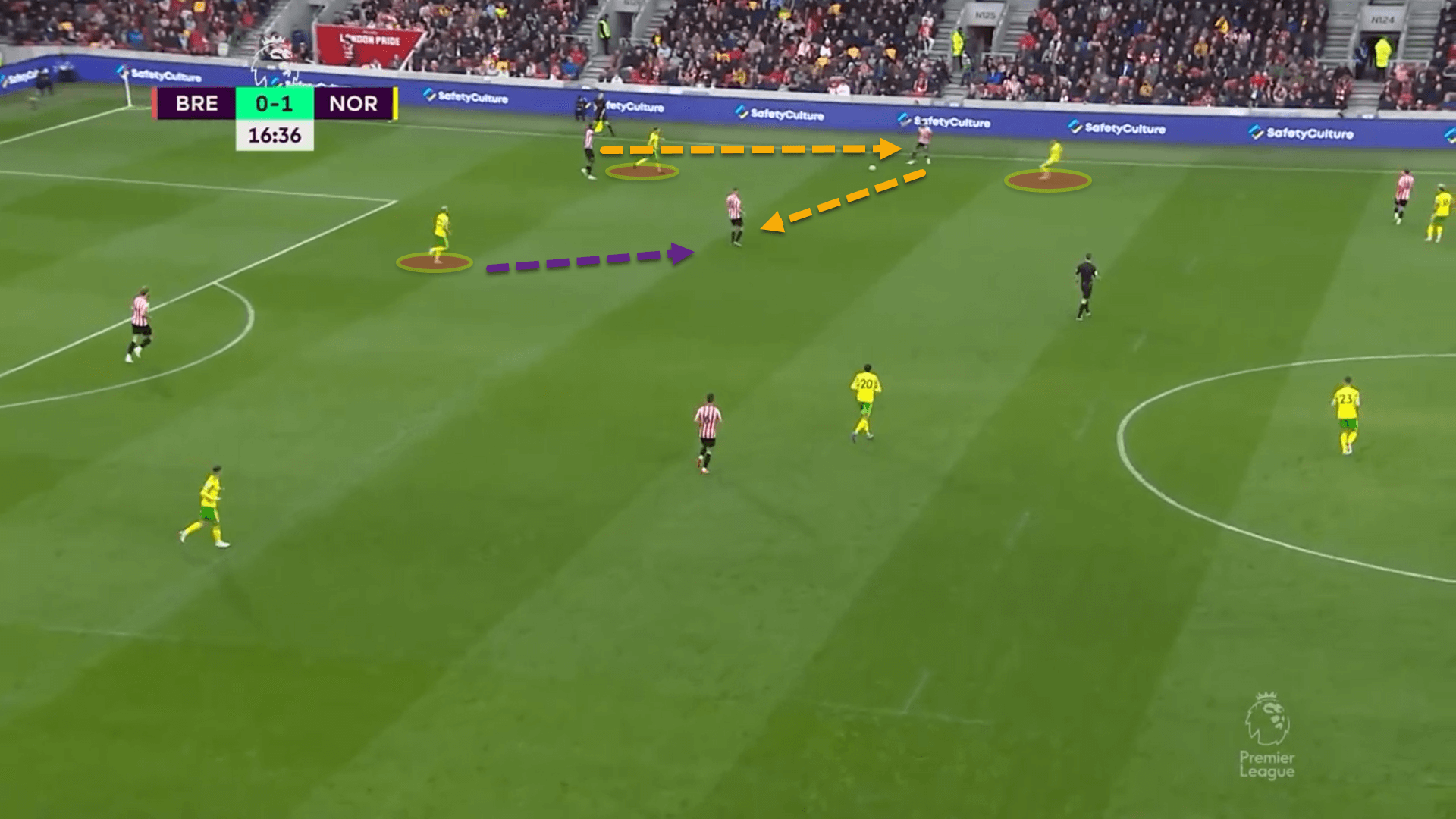
In their only full Premier League campaign under Farke, Norwich averaged 31.3 pressures inside the final third per 90. However, their pressing success rate stood at just 27.4 percent.
Mönchengladbach will likely press in a similar manner under Farke in contrast to Hütter. But it will be interesting to see if they become better or worse during this phase with his tactical guidance.
Farke can’t ignore attacking transitions
On the flip side, Mönchengladbach were one of the most effective pressing teams in Germany last season despite their poor performances. The Foals had 47 shots in total from winning the ball back during pressing moments which was the third-highest in the league, scoring four times.
Hütter came from the Red Bull school of coaching, following in the footsteps of Ralf Rangnick, and quick transitions were an essential part of Mönchengladbach’s style of play. The German giants were far more deadly in these transitional moments as opposed to during settled positional attacks.
While Mönchengladbach pressed high last season and set pressing traps out wide, a lot of their counterattacks came from winning the ball through deeper block defending.
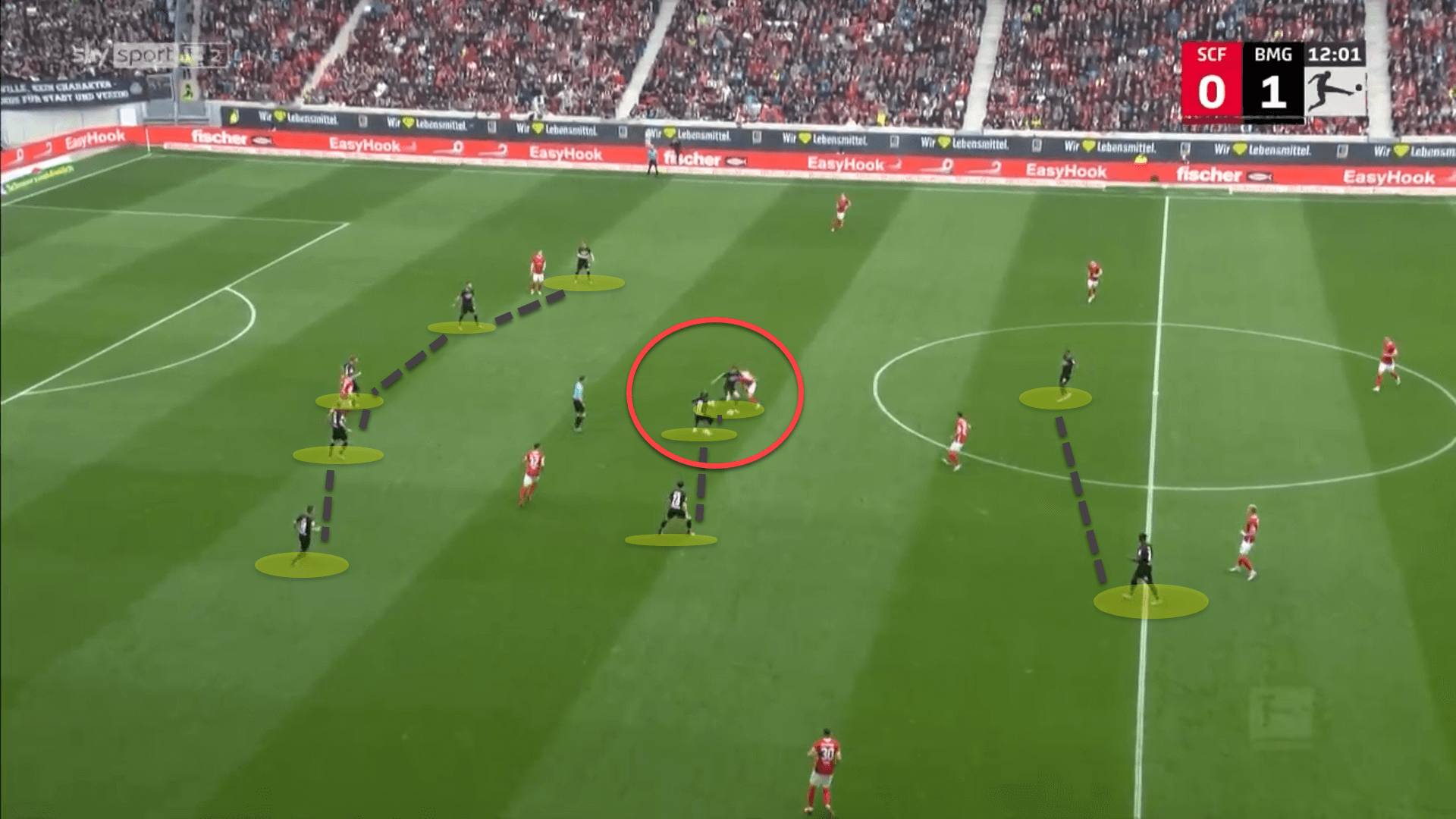
Mönchengladbach employed a zonal block under Hütter. Essentially, this meant that they would remain very compact between the lines, denying central access and forcing their opponent wide.
However, if the opposition made their way inside Mönchengladbach’s defensive block, the players would quickly close down the ball receiver to regain possession. From there, they looked to find the frontmen as fast as possible.
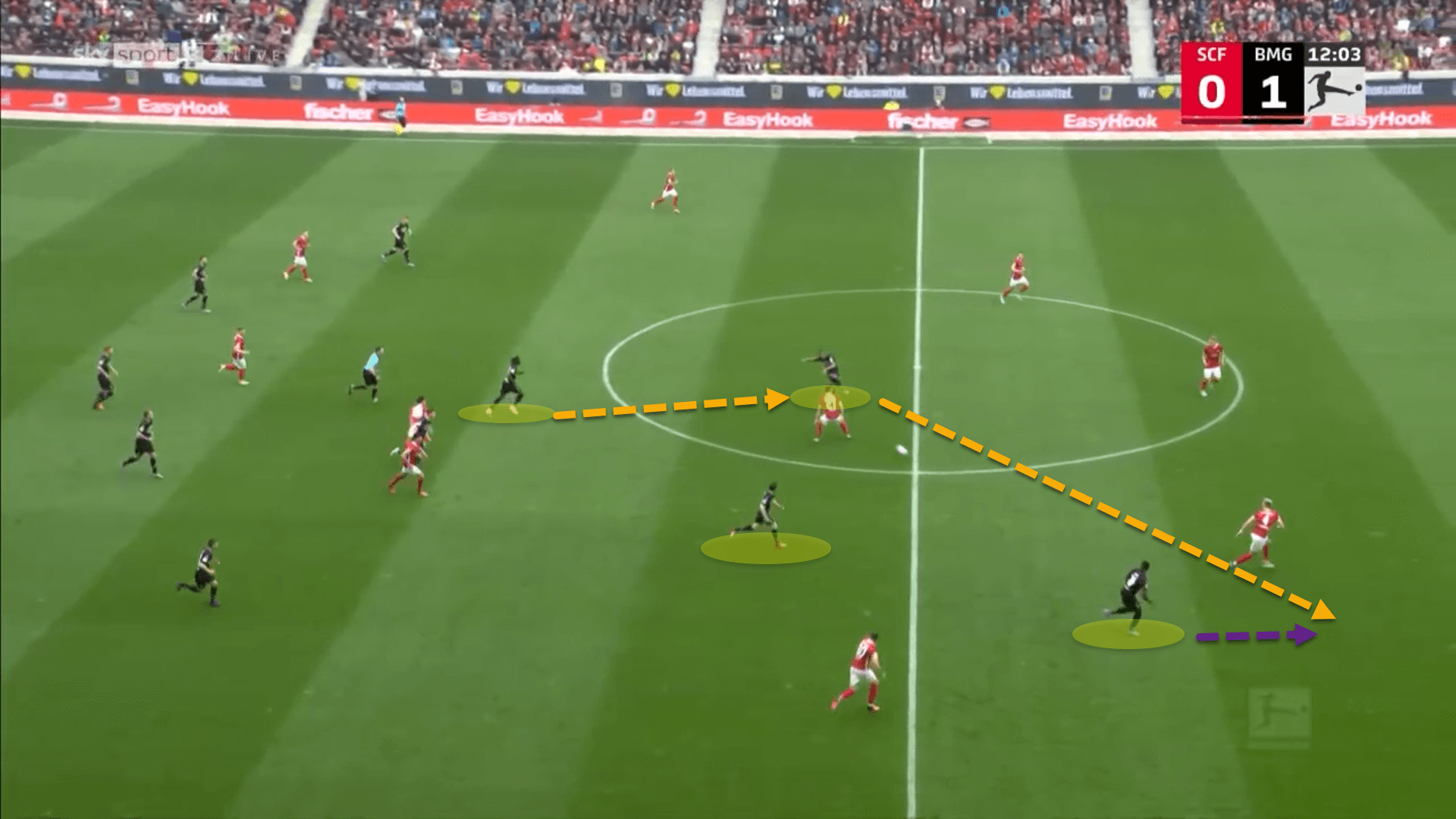
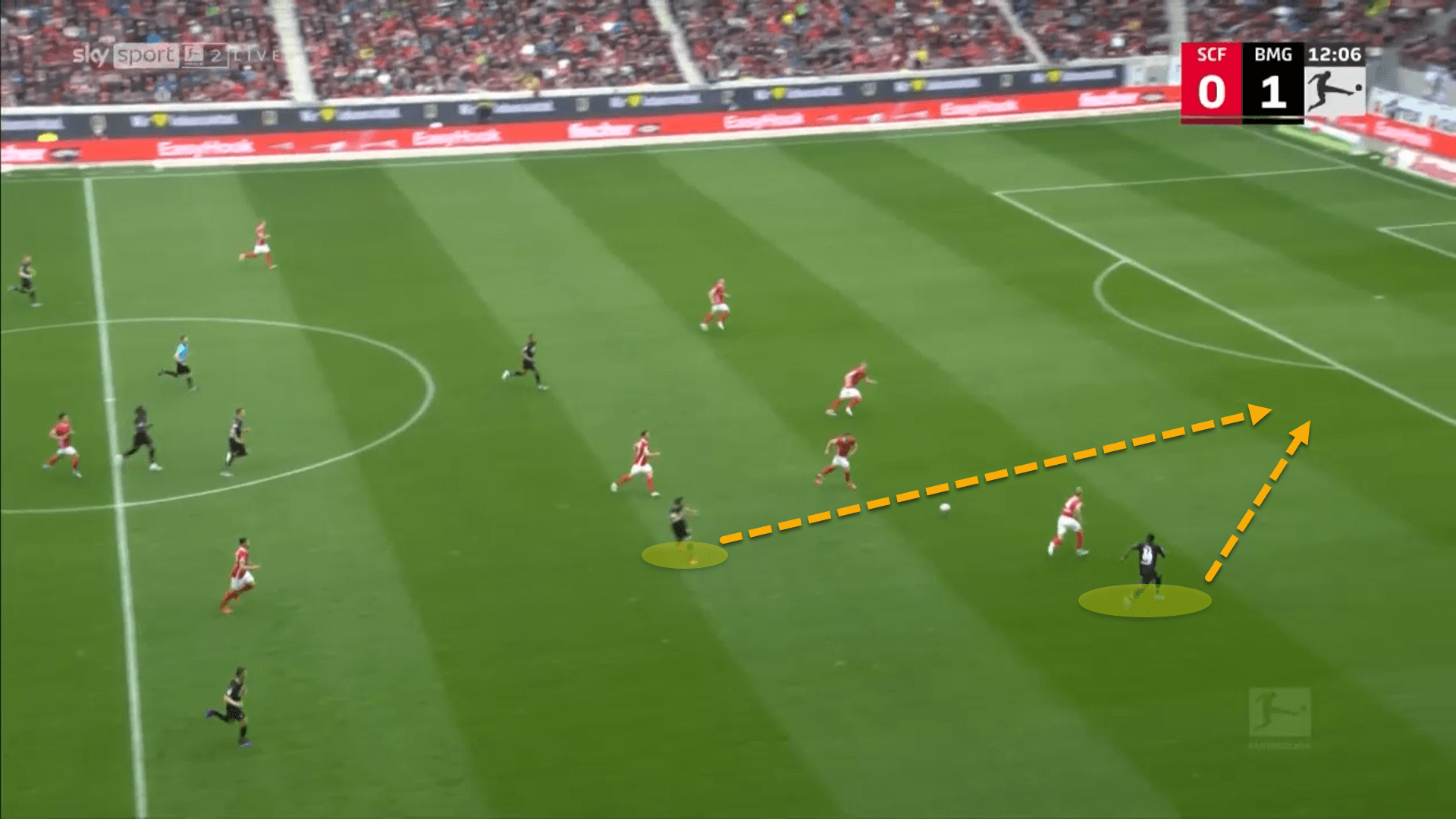
This opportunity led to a goal by Hutter’s side after some wonderful combination play on the counter.
During the 2019/20 Premier League campaign, Norwich City averaged just 2 counterattacks per 90. Last season, Mönchengladbach averaged 3 with 38 percent ending in a chance on goal.
Norwich certainly were not known for being a team that excelled on the break under Farke. However, the German should definitely look to lean on Mönchengladbach’s attacking strengths through their effective transitions.
Nevertheless, the new manager needs to try and stick with Mönchengladbach’s compact defensive structure next season. At Norwich, their defensive shape was open, malleable and downright pathetic at times, particularly in the Premier League.
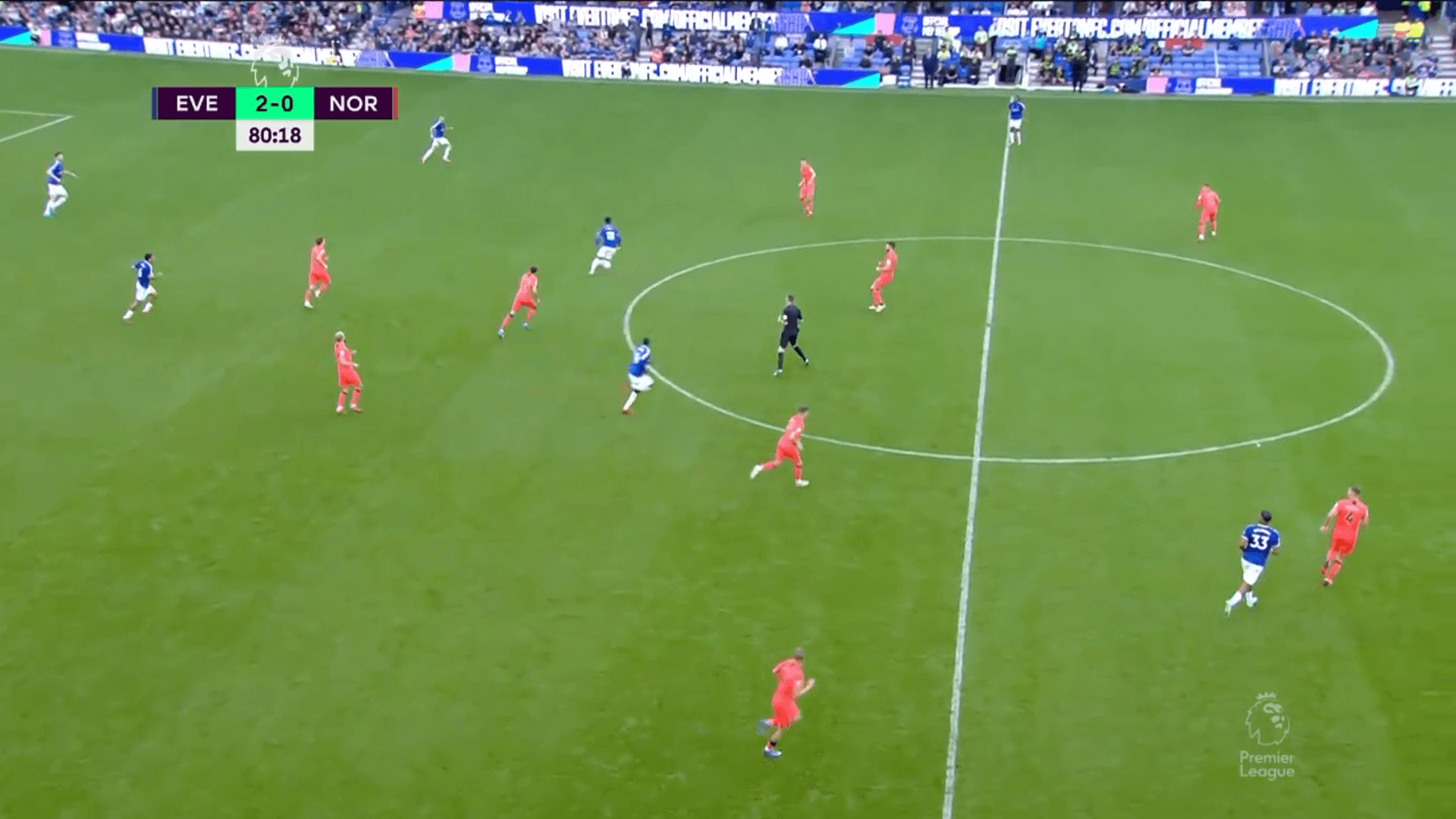
We have purposefully kept this image clear of annotations. Can you guess which shape Norwich are using in the defensive phases?
If you couldn’t guess, it’s a 3-4-1-2 with more holes than a shower head. In English top-flight football, Farke’s Norwich became notorious for giving away plenty of space to the opposition and being defensively feeble.
It’s much more difficult to transition out of a disorganised defensive structure than one that’s organised and so Farke will need to try and ensure that Mönchengladbach do not become as open as Norwich in the defensive phases.
Conclusion
Farke has a lot to prove at Mönchengladbach next season. Anyone familiar with the coach’s work understands just how poetic his sides can be on the ball. However, Farke needs to prove to the world that he can do it in the top tiers of a big-five league and can make a team defensively sound.
Mönchengladbach are taking a massive risk appointing the former Canaries boss, but the board will be hoping that this was a risk worth taking.






Comments